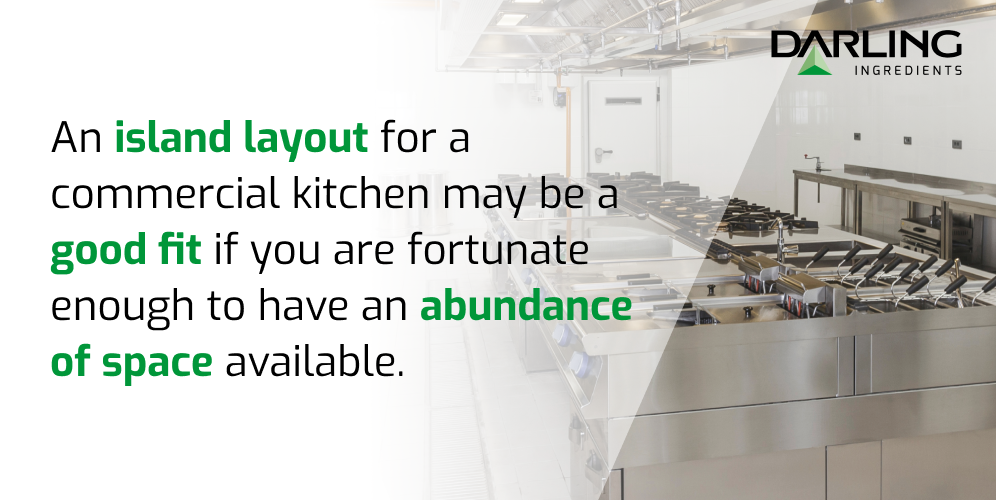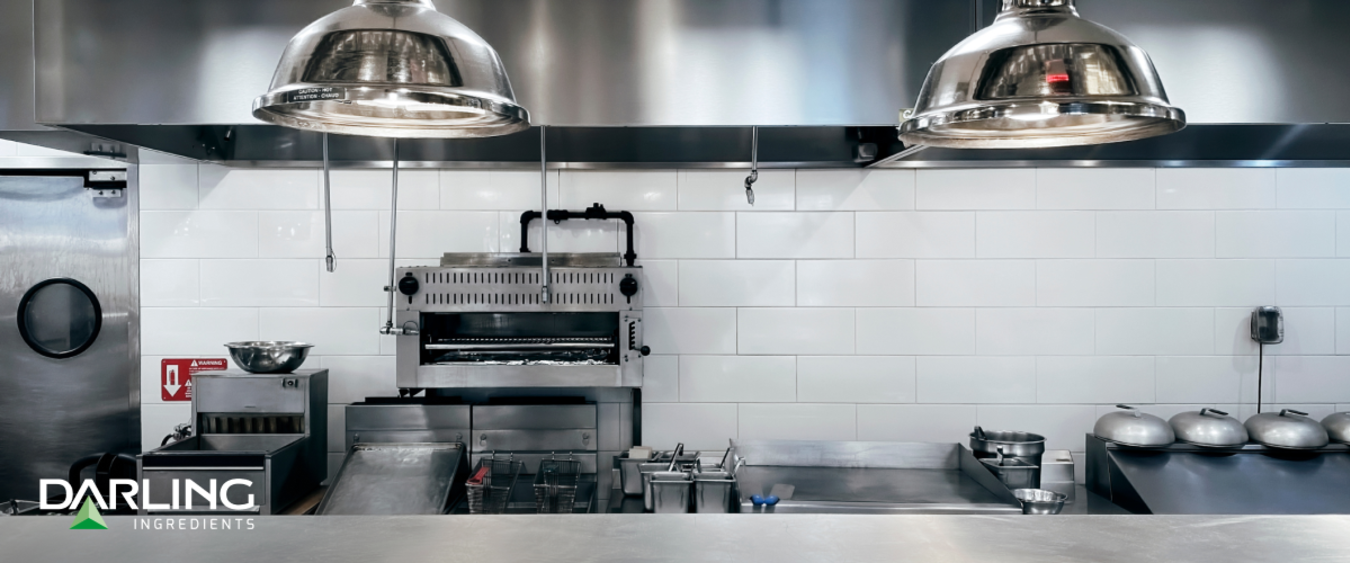Optimizing the space in the kitchen and making it functional for the entire kitchen staff is essential for putting out the best quality food in a timely manner. Additionally, having a good layout helps to ensure the safety of your employees and customers.
Every commercial kitchen is unique and every restaurant has its own particular needs. It's important to keep this, and the actual physical space in mind when choosing the right layout for your establishment.
How Many Commercial Kitchen Layouts Are There?
Of course there are variations and endless ways to design a commercial kitchen, but generally there are five standard layouts to choose from.
Open kitchen
Galley kitchen
Zone-style kitchen
Island kitchen
Assembly line
Each of these options has advantages and disadvantages depending on your needs, the size of the space you have, the type of food you are going to offer, and the style of restaurant you want to have. Let's look at the five popular types of kitchen floor plans below.
An Open Kitchen Layout
An open kitchen is just as it sounds, a kitchen that is in open view to the public. The kitchen staff prepare food near, or directly in front of the guests with this kitchen design. This type of layout offers a unique, nontraditional dining experience and provides entertainment for the diners by bringing what typically takes place behind the scenes to center stage for them to watch and enjoy.
In order to pull off an open kitchen layout, you need to keep guests safe, comfortable, and entertained. That being said, how you lay out the space and being intentional about where you place the high-heat kitchen equipment is necessary.
A Galley Layout
If the space you have for your kitchen is limited, a galley layout might be right for you. A galley commercial kitchen layout spreads the various food prep and cooking stations across the perimeter of the room with the majority of the heavy cooking equipment lined up along one or two walls.
Typically, the entrance and exit of the kitchen are placed opposite from the equipment that is used to prepare and cook the food. This design approach creates enough space for the staff to comfortably move around a smaller space without being in each other’s way.

Zone-Style Layout
The zone-style design is ideal for people making food for large events or large, diverse menus. It is ideal for catering businesses and hotel kitchens that do events regularly. With this layout, each type of food has a specific zone dedicated to its prep and creation.
For example, there may be separate stations for salads, frying, entrees, and desserts spread across the kitchen. This design approach divides up the responsibilities involved in creating the food and allows for various dishes to be put together simultaneously, rather than in a straight-lined process.
Island Layout
An island layout for a commercial kitchen may be a good fit if you are fortunate enough to have an abundance of space available. With this design, the actual food-making portion of the cooking process resides in the center of the kitchen and all the other stations are positioned around it.
If your restaurant is going to have a diverse menu that takes longer to cook than your average quick-service or fast-food establishment, this restaurant kitchen layout is the most conducive and functional.

An Assembly Line
The simplicity of a linear assembly line layout for a commercial kitchen creates a channel for accessible communication from start to finish in the food creation process. An assembly line configuration has food preparation areas, serving the food to the customers, to waste disposal all going directly down the line.
It is an excellent option for commercial kitchens where speed and efficiency are the main focus, such as fast-food restaurants or kitchens with limited menus.
Considerations When Deciding on Your Restaurant Kitchen Layout
There are various factors to consider when deciding on the best layout for your commercial kitchen. The most common factors that will influence the final decision are space, appliances, storage, and communication.

Space
When determining which commercial kitchen design is best, space can be a limitation or an advantage. Your decision on how much space you can and will allot to your back-of-house operations is crucial.
Some specific layout designs are more conducive to small spaces, while others fit larger areas. You’ll want to avoid an overcrowded kitchen as it can hinder your operations and contribute to inefficiency. Therefore, choosing a layout that matches and flows with the dimensions of the space is vital.
Appliances
Appliances are an essential part of any kitchen. When you think about the items you will offer on your menu, what equipment will you need to cook your food items from start to finish? Fryers, grills, sinks, dishwashing stations, and other appliances come in varying sizes. Before configuring your kitchen, determine what commercial kitchen equipment you’ll need, the size of the equipment, and where you will be able to place it.
Do you have space for an indoor used cooking oil container that can connect directly to your fryers for easy oil disposal? Or will you be disposing of your grease manually bringing it to an outdoor container? In order for your kitchen to function properly and efficiently, you’ll need a solid understanding of the kitchen equipment you plan on using.
Storage
In addition to space designated to kitchen equipment and operations, you need storage space. Storage for ingredients and smaller equipment, like pots and pans. prep tables, dirty dishes while still in the middle of cooking. Factor in to your decision making process how much shelving pantry, refrigerator, and freezer space you require.
Having sufficient storage space that is organized and filled with the correct ingredients will ensure your kitchen staff is able to prepare dishes with ease and consistency.
Communication
A commercial kitchen layout can positively or negatively contribute to the level of communication among staff members. The right layout can enhance the efficiency, effectiveness, and the volume of food coming out of the kitchen. Consider the different areas for food preparation and put areas that work closely together near each other. You want to avoid staff members getting in the way of each other and the customers.
Choose a design that minimizes or eliminates inefficiencies. Avoid employees needing to push through appliances or a crowd to pass food to the next step in its preparation. We’ve all heard the saying, “communication is key,” and a restaurant kitchen is no exception to this.
Complete Your Commercial Kitchen Layout with Darling Ingredients
You now have knowledge of common design ideas, layouts, and factors to consider. This will help you select a restaurant kitchen layout that suits your business's unique needs.
Get one step closer to having a perfect restaurant kitchen by using Darling Ingredients Canada to handle all your greasy needs. Darling Ingredients offers top-notch used cooking oil equipment that easily fits with any kitchen design.
Find out how your business could greatly benefit from our program by reaching out to a representative today.
Call us at 800-263-0302, any day, anytime.
